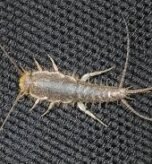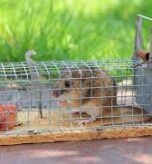While charming at first, the presence of squirrels on your property can quickly escalate into a significant nuisance. An unchecked squirrel infestation can lead to costly property damage, safety hazards, and potential health risks. This guide provides a structured approach to help you get rid of squirrels by focusing on humane eviction techniques, robust exclusion strategies, and fostering peaceful coexistence. Our methods prioritize animal welfare while safeguarding your home.
Understanding Why Squirrels Move In
To effectively get rid of squirrels, you first need to understand their behavior and motivations for seeking shelter indoors.
Why Squirrels Are Attracted to Your Home
Squirrels are naturally drawn to places that offer shelter from bad weather and predators. They also seek secure locations for nesting and raising their young. Your attic, in particular, mimics the tree hollows they use in the wild, making it a highly attractive nesting spot.
When Squirrels Are Most Likely to Nest
Female squirrels often use attics to give birth and raise their young. The peak nesting seasons typically run from February to May and again from August to October. This reproductive cycle is a critical factor to consider in any humane removal strategy.
How Different Squirrel Species Behave
Different squirrel species have distinct behaviors that will influence your removal strategy.
- Gray Squirrels: These squirrels are active during the day, which makes daylight trapping more effective.
- Flying Squirrels: In contrast, these are nocturnal, so you should set traps for them in the evening or at night.
- Red Squirrels: Known for being territorial and sometimes aggressive, red squirrels require a more careful and targeted approach.
Signs You Need to Get Rid of Squirrels
Recognizing the signs of a squirrel infestation is crucial for timely intervention.
- Strange Noises: You might hear scratching, scurrying, or thumping sounds, especially at dawn and dusk when squirrels are most active.
- Visible Damage: Look for gnaw marks on electrical wires, wood beams, siding, or roof components. You might also find holes in your eaves, soffits, or roofline.
- Unpleasant Odors: Musky odors from urine, feces, or a dead animal are strong indicators of an infestation. Squirrel urine can also saturate drywall and lead to mold.
- Other Clues: Sagging power lines from frequent squirrel traffic or a pet that is obsessed with a specific area of your home can also be signs.
Humane Ways to Get Rid of Squirrels
Implementing humane eviction and deterrence strategies is paramount. Here’s how you can encourage squirrels to leave on their own.
Using Repellents and Disruption
You can make your attic an undesirable place for squirrels without harming them.
- Smell Repellents: Place ammonia-soaked rags or use pepper-based and mint-scented repellents near nesting areas.
- Sound and Light Deterrents: Turn on bright lights in the dark attic or play a loud radio (talk stations with human voices work well). This can create an unwelcoming atmosphere that prompts squirrels to leave.
- What Not to Use: It is critical to know that mothballs are not only ineffective but also toxic. Furthermore, ultrasonic pest repellers have not been scientifically proven to work.
Trapping Squirrels Humanely and Legally
Successful and humane trapping requires following specific protocols.
- Choose the Right Trap: Use a squirrel-sized live cage or box trap to ensure the animal’s comfort.
- Use Effective Bait: Peanut butter and whole peanuts are highly effective baits. A trail of bait leading into the trap can increase your chances of success.
- Place Traps Strategically: Position traps in areas of frequent squirrel activity, near their entry points, or along their travel paths.
- Monitor Traps Consistently: You must check your traps at least once every 24 hours to minimize stress on any trapped animal.
- One-Way Doors: One-way exclusion doors are highly effective. They allow squirrels to exit your attic but prevent them from getting back in.
Handling and Releasing Trapped Squirrels
Always wear thick, heavy-duty gloves when handling a live trap to prevent bites or scratches. Release trapped squirrels immediately after you catch them to minimize their distress. However, be aware that wildlife relocation laws vary by state and are often restricted. For example, some states require you to release the animal on the same property or have it humanely euthanized.
Special Considerations: Dealing with Baby Squirrels
The presence of young squirrels significantly impacts your removal strategy. If you find a squirrel in your attic during the breeding season, it is safest to assume that babies are present.
- Never Separate a Mother from Her Young: Trapping the mother and leaving her offspring behind will lead to their death.
- Locate the Nest: Nests are usually made from insulation and debris and are often found near the attic’s edges or in soffits.
- Be Patient: If possible, wait a few weeks for the young squirrels to mature enough to leave with their mother. This gives them the best chance of survival.
Preventing Squirrels from Coming Back
Once you get rid of squirrels, preventing their return is crucial for long-term success.
- Seal All Entry Points: Identify and seal any cracks or gaps larger than a quarter-inch. Use sturdy materials like hardware cloth or steel mesh.
- Secure Your Chimney: Install a sturdy steel chimney cap to block access.
- Protect Vents: Cover all air intake and exhaust vents with durable mesh screens.
- Trim Tree Branches: Keep tree branches at least 6-10 feet away from your house to eliminate easy access to your roof.
- Manage Food Sources: Use squirrel-proof bird feeders, secure your garbage cans with tight lids, and clean up fallen fruit from trees.
When to Call a Professional for Help
While you can manage some squirrel issues yourself, certain situations require the expertise of a professional wildlife control service.
- Extensive Infestations: If you suspect a large population, a professional can manage the situation more efficiently.
- Safety Concerns: Squirrels can become aggressive when they feel threatened. A professional is trained to handle them safely.
- Complex Situations: If squirrels are in a hard-to-reach area like a wall cavity, a professional will have the specialized tools needed.
- Legal Compliance: A professional will be knowledgeable about local wildlife removal laws and ensure the process is done legally and ethically.
The Risks of a Squirrel Infestation
Beyond being a simple annoyance, a squirrel infestation poses several serious risks.
- Fire Hazard: Squirrels often chew on electrical wires, which creates a significant risk of a house fire.
- Health Risks: Their feces and urine can contaminate insulation and spread diseases like Salmonellosis and Leptospirosis. They can also carry fleas, ticks, and mites.
- Structural Damage: Their continuous gnawing can cause significant damage to wood beams, siding, and roof components.
Conclusion: Achieving Sustainable Coexistence
To effectively get rid of squirrels, you need a balanced approach that combines humane eviction, diligent exclusion, and an awareness of the law. By implementing robust preventive measures and seeking professional help when needed, you can achieve a harmonious and sustainable coexistence with local wildlife while ensuring the safety and integrity of your home.



